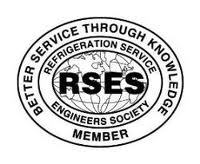Wifi-enabled “smart” thermostats are the newest device in home automation. “Smart” thermostats feature easy-to-use touchscreen displays and integrated circuity complex enough to interpret local weather data, respond to demands through remote access from your mobile device, tablet, or computer, monitor HVAC system components, program heating/cooling schedules, and much more. Wi-fi thermostats make heating and cooling your home easy, convenient, and cost effective. If you don’t have time to micromanage your thermostat and often times forget to setback your thermostat, or leave it running at a constant temperature all day long, then upgrading to a “smart” thermostat will automate these energy and money saving modifications for you, while providing drastic savings on your next utility bill.
Avoiding heating and cooling your home in excess when the space is not occupied or even while you’re sleeping at night is key to reducing the amount of energy used to condition your home, thus cutting your monthly heating and cooling costs. Remembering to setback your thermostat every time you leave or before you fall asleep can be a hassle, especially if you’re in and out of your house several times a day. Even if you do remember to setback your thermostat, upon return you would have to wait for your house to heat or cool back (depending on the season) to a comfortable temperature. If you’re not setting back your thermostat and leaving it at a constant temperature all winter long, you’ll find you can save a small fortune by varying the operating temperatures of your thermostat throughout the day based on your daily schedule.
With a “smart” thermostat consumers have the ability to compare energy consumption from previous months, weeks, and days with built in monitoring systems that provide data on your heating and cooling activities. If you’re a big statistics nerd, than you’ll enjoy being able to optimize your energy savings and comfort by comparing and adjusting temperatures and other ambient conditions such as air ventilation and humidity thanks to the data provided by your handy wi-fi enabled thermostat. For those of you wondering if you’re tech-savvy enough to operate a “smart” thermostat, than I have a simple message: if you are reading this article right now, you have enough technological know-how to operate such a device.
With bigger screens, easy-to-use menu interfaces, and touchscreen capability, wi-fi thermostats not only simplify operation but are actually quicker to use than button or dial-type programmable thermostats. With “companion apps” for your mobile device(s) and web portals formatted similar to a Facebook page or your email program, these devices are very ‘user-friendly’. Most “smart” thermostats can even send you notification emails alerting you when you’re HVAC system isn’t functioning properly or that your temperature has fallen too high or low below a setting. Some can even remind you when it’s time to change your air filters. And because your “smart” thermostat has wireless internet access in your home, you’re thermostat will never be thrown off an hour by daylight savings (“smart” thermostats clocks automatically adjust to time changes)!!
Programmable thermostats became prevalent in the 90’s after governments began mandating changes in energy efficient standards and energy costs rose considerably. National surveys show only about 11% of consumers with programmable thermostats remember to program them! When compared to out-dated programmable thermostats without wi-fi, “smart” thermostats save an average of 30% in energy costs, versus an average of 10% with programmables – that is if you ever programmed your programmable! (Divide last months heating bill by .03. That’s how much money you could be putting back in your pocket with an updated “smart” thermostat 🙂 )
Space heating is the largest energy expense in the U.S. household, accounting for about 45% of your home’s total energy consumption. According to a national survey on thermal comfort in homes, when asked what improvements in their home heating and cooling system could be made, 68% of homeowners requested better temperature control and 65% requested more consistent temperatures (Decision Analyst, 2008).In addition to all the physical comfort advantages of upgrading to a more energy-efficient “smart” thermostat, it is important to note the environmental factor of cost-effective energy-efficiency devices.
Residential cooling and heating accounts for nearly 40% of all carbon emissions and 70% of all electricity use (a contributing factor to carbon emissions) per year in the United States. According to studies, U.S. buildings are currently responsible for more CO2 emissions than every other country except China. As the U.S. Green Building Council states in their report, ‘Buildings and Climate Change‘, “modest investments in energy-savings and other climate-friendly technologies can yield buildings and communities that are environmentally responsible, profitable, and healthier places to live and work”.
As far as price goes, most “smart” wi-fi enabled thermostats range from $200-$300 depending on the manufacturer and the features provided. It is important to note that almost any “smart” thermostat will require more money at the initial purchase than a simple programmable. In most regions the savings provided by your “smart” thermostat (up to 30% energy savings) are enough to pay for your thermostat within the first year of purchase.
In conclusion it is important to reiterate that “smart” thermostats don’t provide economical and environmental savings on their own. Wi-fi enabled thermostats simply automate and “learn” your energy consuming habits for you, they do still need to be programmed correctly for optimal savings and performance. It is important to allow a professional to install and set-up these devices for you to ensure all the provided features work in conjunction with your HVAC system.
(“setback” is a term used in the industry that simply refers to turning down the thermostat)




